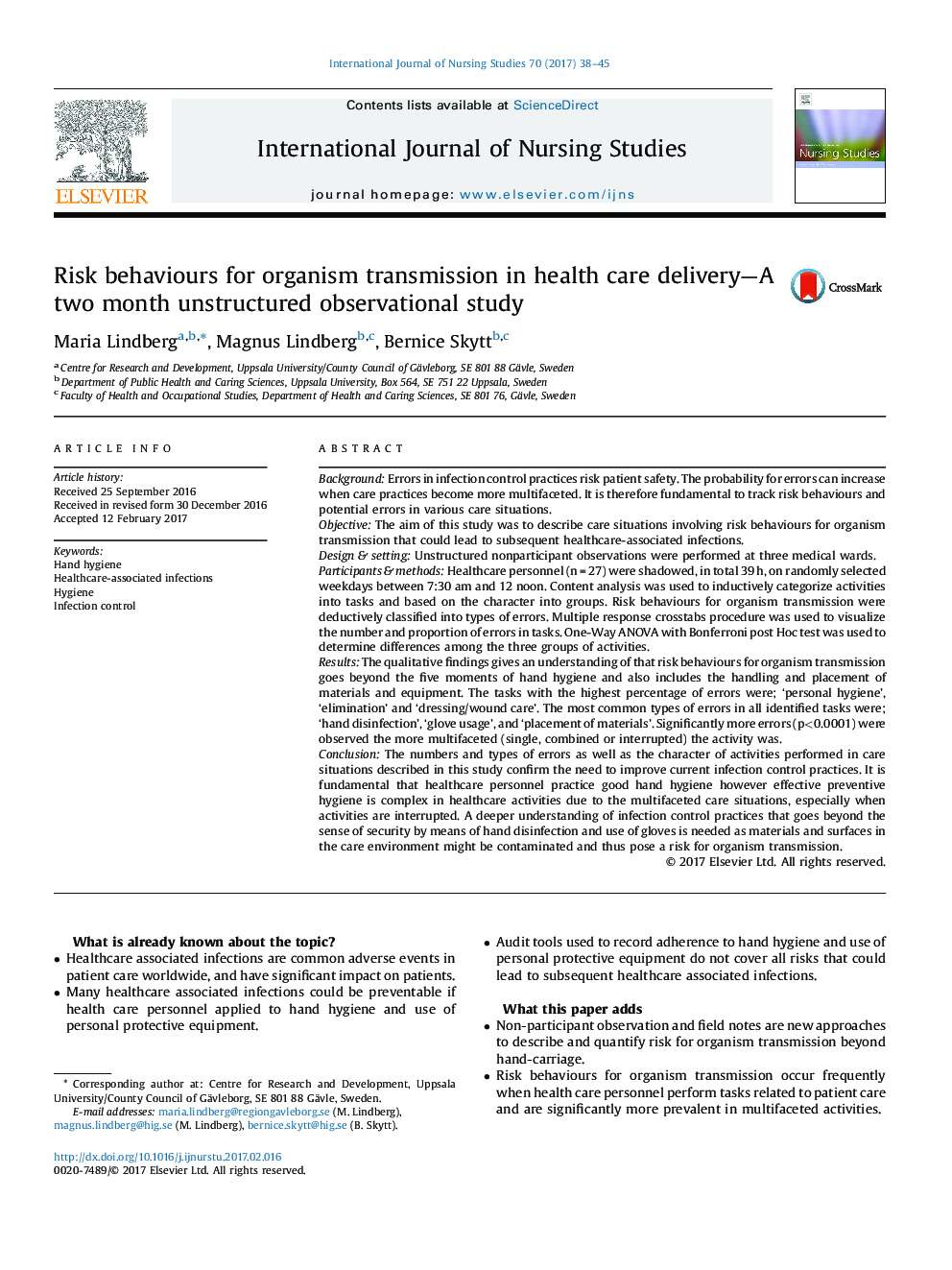| کد مقاله | کد نشریه | سال انتشار | مقاله انگلیسی | نسخه تمام متن |
|---|---|---|---|---|
| 5121123 | 1486499 | 2017 | 8 صفحه PDF | دانلود رایگان |
BackgroundErrors in infection control practices risk patient safety. The probability for errors can increase when care practices become more multifaceted. It is therefore fundamental to track risk behaviours and potential errors in various care situations.ObjectiveThe aim of this study was to describe care situations involving risk behaviours for organism transmission that could lead to subsequent healthcare-associated infections.Design & settingUnstructured nonparticipant observations were performed at three medical wards.Participants & methodsHealthcare personnel (n = 27) were shadowed, in total 39 h, on randomly selected weekdays between 7:30 am and 12 noon. Content analysis was used to inductively categorize activities into tasks and based on the character into groups. Risk behaviours for organism transmission were deductively classified into types of errors. Multiple response crosstabs procedure was used to visualize the number and proportion of errors in tasks. One-Way ANOVA with Bonferroni post Hoc test was used to determine differences among the three groups of activities.ResultsThe qualitative findings gives an understanding of that risk behaviours for organism transmission goes beyond the five moments of hand hygiene and also includes the handling and placement of materials and equipment. The tasks with the highest percentage of errors were; 'personal hygiene', 'elimination' and 'dressing/wound care'. The most common types of errors in all identified tasks were; 'hand disinfection', 'glove usage', and 'placement of materials'. Significantly more errors (p<0.0001) were observed the more multifaceted (single, combined or interrupted) the activity was.ConclusionThe numbers and types of errors as well as the character of activities performed in care situations described in this study confirm the need to improve current infection control practices. It is fundamental that healthcare personnel practice good hand hygiene however effective preventive hygiene is complex in healthcare activities due to the multifaceted care situations, especially when activities are interrupted. A deeper understanding of infection control practices that goes beyond the sense of security by means of hand disinfection and use of gloves is needed as materials and surfaces in the care environment might be contaminated and thus pose a risk for organism transmission.
Journal: International Journal of Nursing Studies - Volume 70, May 2017, Pages 38-45
